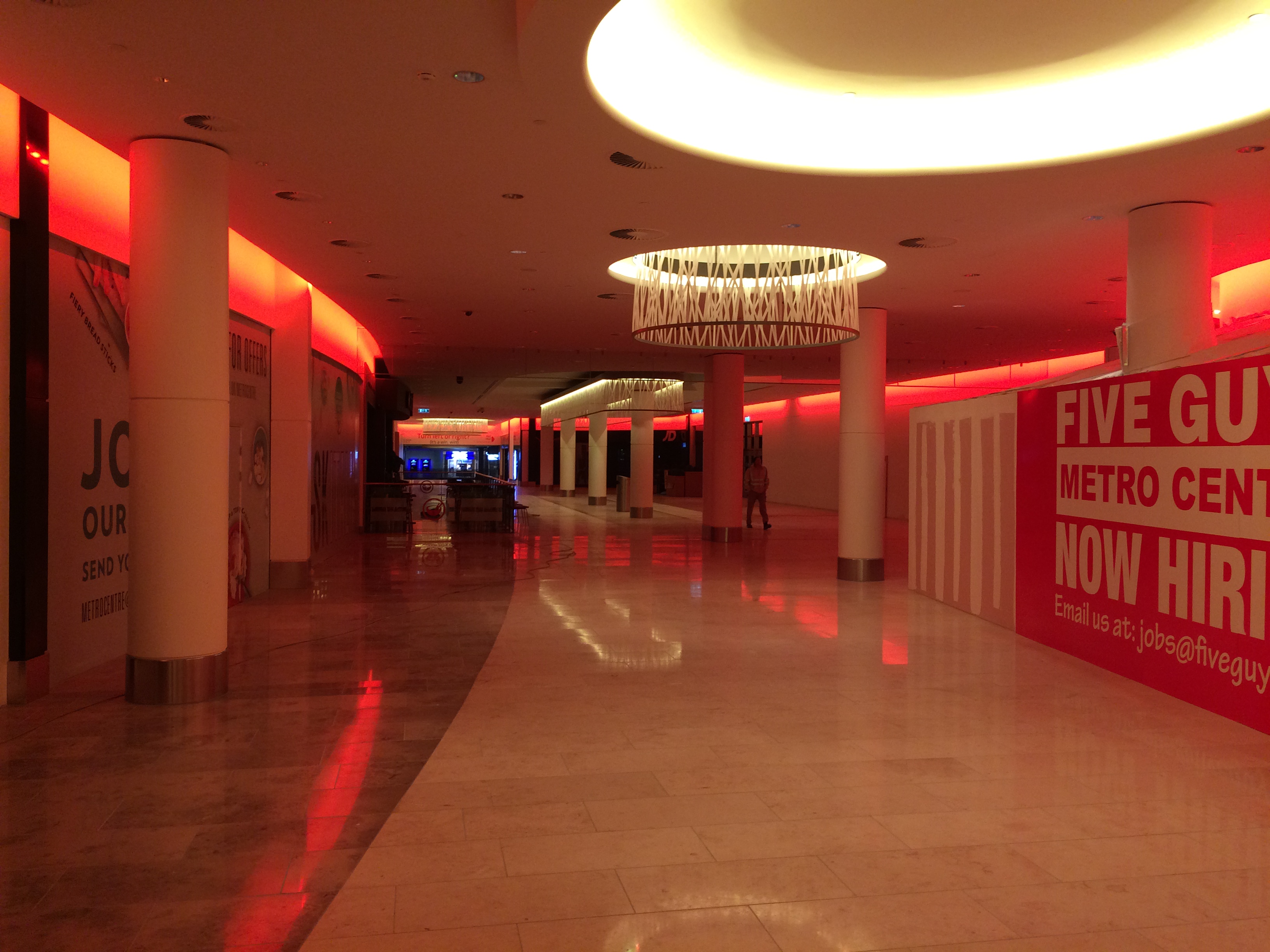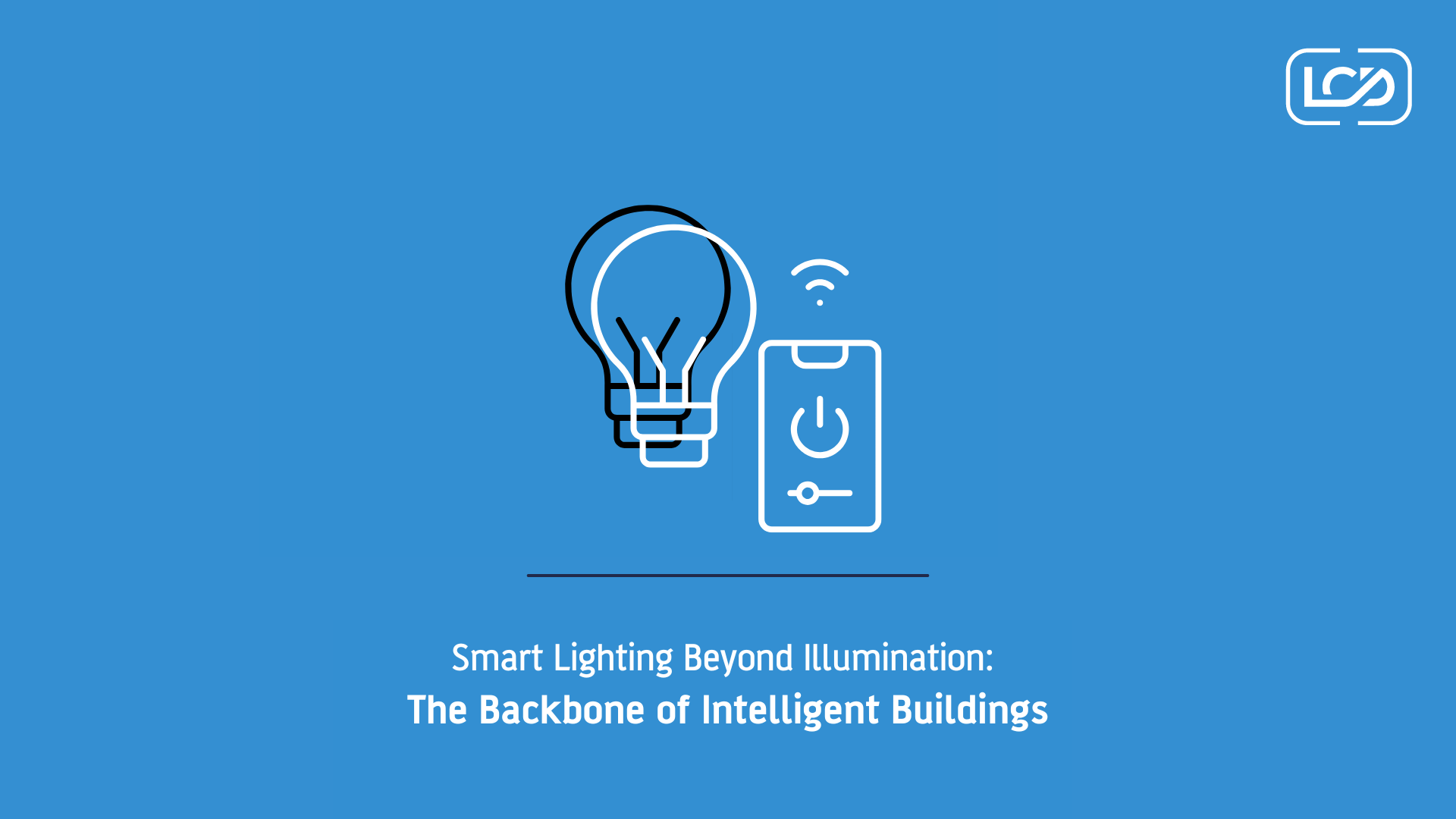Smart Lighting Beyond Illumination:
The Backbone of Intelligent Buildings
Discover how integrated lighting control systems have evolved beyond illumination to become the central nervous system of intelligent buildings, delivering unprecedented ROI through energy savings, operational efficiency, and enhanced user experiences.
The executive stood motionless in the center of the corporate headquarters lobby, watching with quiet satisfaction as the building responded to his presence. As he entered, lighting gradually illuminated his path, the temperature adjusted to his preferred setting, and security systems silently logged his arrival—all without a single manual interaction. What appeared to be science fiction just a decade ago has become the new standard for forward-thinking organizations. At the center of this transformation? Not the HVAC system. Not the security infrastructure. But the humble lighting control system that has evolved into the most powerful integration platform in modern building design.
The evolution of smart lighting represents one of the most significant yet underappreciated technological shifts in commercial building management. What began as simple on/off functionality has transformed into sophisticated networks that serve as the backbone of truly intelligent buildings. These systems no longer just control illumination—they orchestrate entire environments, interfacing seamlessly with HVAC, security, audiovisual systems, and more to create responsive spaces that adapt to human needs while maximizing operational efficiency.
For facility managers, building owners, and AV specialists navigating this rapidly evolving landscape, understanding the strategic importance of lighting control systems has never been more crucial. The organizations that recognize lighting as more than an aesthetic or functional element—but as the neural network of their buildings—are gaining competitive advantages through dramatic energy savings, enhanced productivity, and elevated occupant experiences that directly impact the bottom line.
The Smart Lighting Evolution
To appreciate the revolutionary role smart lighting now plays in building intelligence, we must understand its rapid evolution. Traditional lighting systems represented single-purpose infrastructure—confined to the basic function of illumination through manual controls. The first wave of “smart” lighting introduced programmable schedules and basic motion sensing, primarily focusing on energy conservation through automated shutoff capabilities.
The transformation accelerated dramatically with the emergence of networked lighting control systems built on digital protocols rather than analog wiring. This shift created the foundation for what we now recognize as truly intelligent systems. Neil Silver, Chief Technology Officer at LCD, explains: “The digitization of lighting control fundamentally changed the game. Once lighting became an addressable network of nodes rather than circuits of electricity, we gained the ability to use this infrastructure—which already spans every square foot of usable space—as a building-wide integration platform.”
This perspective shift is crucial. Modern lighting control systems have evolved into extensive sensor networks that constantly collect and process data about occupancy, daylight levels, temperature, and even air quality. More importantly, they’ve become powerful communication platforms with the capability to translate between different building systems that previously operated in isolation. This ability to serve as a universal translator between disparate technologies has elevated lighting controls from a single-purpose system to the central nervous system of intelligent buildings.
Lighting as the Sensor of the integration platform

Metro Centre – Newcastle
The emergence of lighting as the primary integration platform for building intelligence wasn’t arbitrary. Several inherent advantages positioned lighting control systems for this pivotal role. First, lighting infrastructure already extends to virtually every usable space within a building—providing an existing network that spans the entire facility. Second, lighting systems require responsiveness measured in milliseconds rather than minutes (unlike HVAC systems), making them ideal for time- sensitive operations. Finally, with the adoption of LED technology, digital control became a fundamental requirement rather than an optional enhancement. The same sensors that activate lights now inform security, adjust HVAC, and coordinate audiovisual systems, creating a cohesive ecosystem that responds to occupant needs. The ROI Beyond Energy: Quantifying the Full Value Proposition
The most frequently cited benefit of intelligent lighting control is energy savings—and with good reason. Energy reductions of 35-70% are consistently achievable through integrated approaches that coordinate lighting with occupancy, daylight, and HVAC operations. However, focusing exclusively on energy efficiency dramatically undervalues the comprehensive return on investment these systems deliver.
Operational efficiency represents another substantial value driver. Facility management teams report 30-40% reductions in maintenance and support requirements after implementing integrated lighting control platforms. This efficiency stems from several factors: centralized monitoring that enables predictive maintenance, simplified troubleshooting through integrated system visibility, and dramatic reductions in user support requests through more intuitive interfaces.
Perhaps most significant—yet often overlooked—is the impact on occupant productivity and experience. A landmark study conducted across 14 commercial buildings equipped with integrated lighting control systems documented an average 7.4% increase in measured workplace productivity. For knowledge-based organizations, this productivity enhancement often represents the most substantial ROI component, easily eclipsing energy savings by an order of magnitude.
Jerry Berrios, Workplace Strategy Analyst at LCD, emphasizes this holistic perspective: “We’ve moved beyond evaluating lighting control solely through the lens of watts saved. The most sophisticated clients now recognize that the human experience benefits—productivity enhancements, wellness improvements, and talent attraction—deliver returns that dwarf traditional energy savings calculations. When a system can simultaneously reduce energy consumption while improving cognitive function and satisfaction, the ROI conversation fundamentally changes.”
This expanded view of return on investment becomes particularly compelling when considering the relatively modest incremental cost of integrated approaches compared to traditional siloed implementations. Organizations typically invest substantially in lighting, HVAC, security, and audiovisual systems regardless of integration strategy. The additional investment required to implement an integrated platform generally adds only 8-12% to base system costs while delivering multiples of that value through combined benefits.

Restoration Yard – Dalkeith, Scotland
Navigating Integration Challenges
Despite their benefits, integrated lighting control strategies face challenges. Interoperability between systems from different manufacturers is a persistent obstacle. LCD addresses this with protocol translation and manufacturer-specific drivers, alongside a collaborative approach involving stakeholders from the outset. For retrofits, selective hardware upgrades and middleware can connect modern lighting controls with legacy systems, ensuring a seamless integration.
The Future of Lighting Control
The evolution of lighting control as the integration backbone of intelligent buildings continues to accelerate, with several emerging capabilities poised to further transform the built environment. Machine learning algorithms are enhancing the predictive capabilities of these systems—moving beyond reactive responses to anticipatory adjustments based on learned patterns and preferences. A recently implemented proof of concept LCD system at a technology headquarters now anticipates meeting room requirements based on calendar integration and historical usage patterns, pre-configuring environments before occupants arrive.
Perhaps most transformative is the evolution toward human-centric lighting that dynamically adjusts spectral characteristics to support circadian rhythms and enhance cognitive function. By integrating circadian lighting strategies with other building systems, these platforms can now coordinate comprehensive wellness environments that consider illumination, thermal comfort, air quality, and acoustic conditions simultaneously.
For facility managers and AV specialists, these emerging capabilities present both opportunities and challenges. The expanding scope of lighting control systems requires broader expertise and more collaborative approaches to system design. However, it also creates opportunities to deliver unprecedented value through environments that actively contribute to organizational objectives rather than merely housing activities.
From Illumination to Intelligence

Principle Edinburgh
The shift from basic lighting management to integrated intelligence represents a fundamental change in building infrastructure. Organizations that approach building technology strategically, recognizing lighting control as a foundational platform, will create environments that advance their objectives. As we look to the future, smart lighting will be at the heart of responsive, efficient, and sustainable buildings. Organizations that embrace this evolution will not only house their operations but actively enhance human potential. For a tailored consultation on transforming your facilities with integrated lighting control systems, contact the LCD team. Our experts are ready to guide you through the process of adopting these advanced technologies, ensuring that your building infrastructure is not only future-proof but also a catalyst for achieving your organizational goals.


